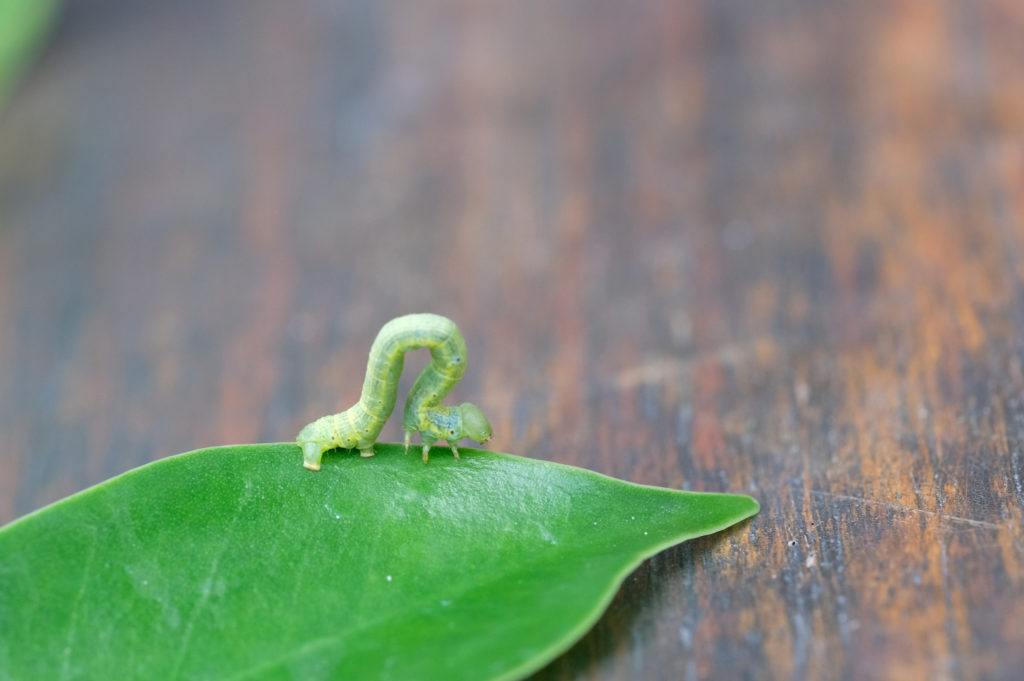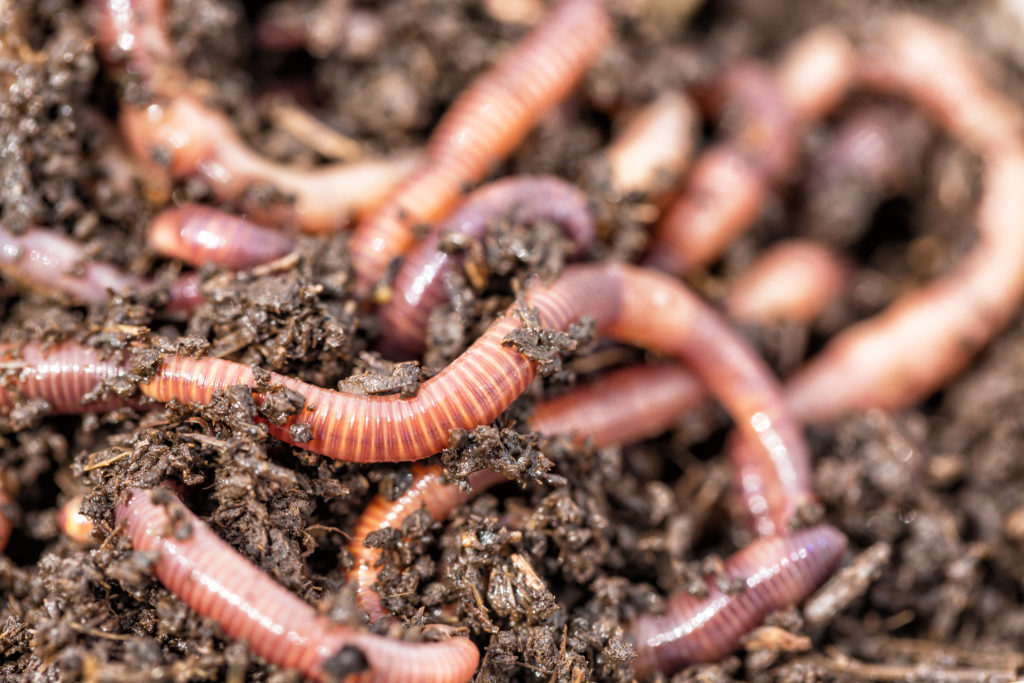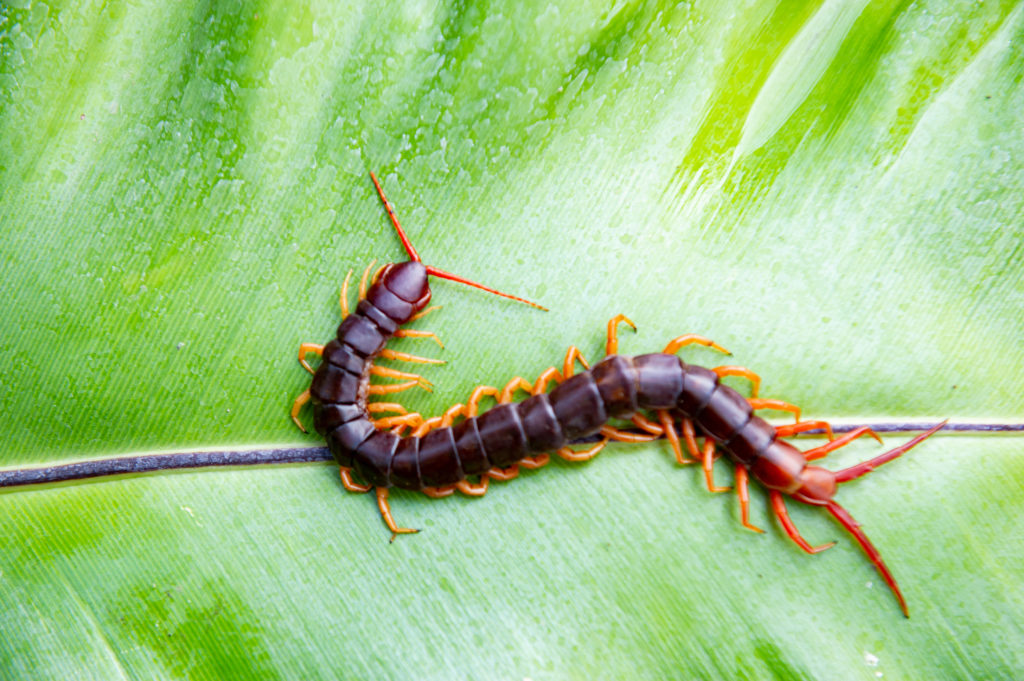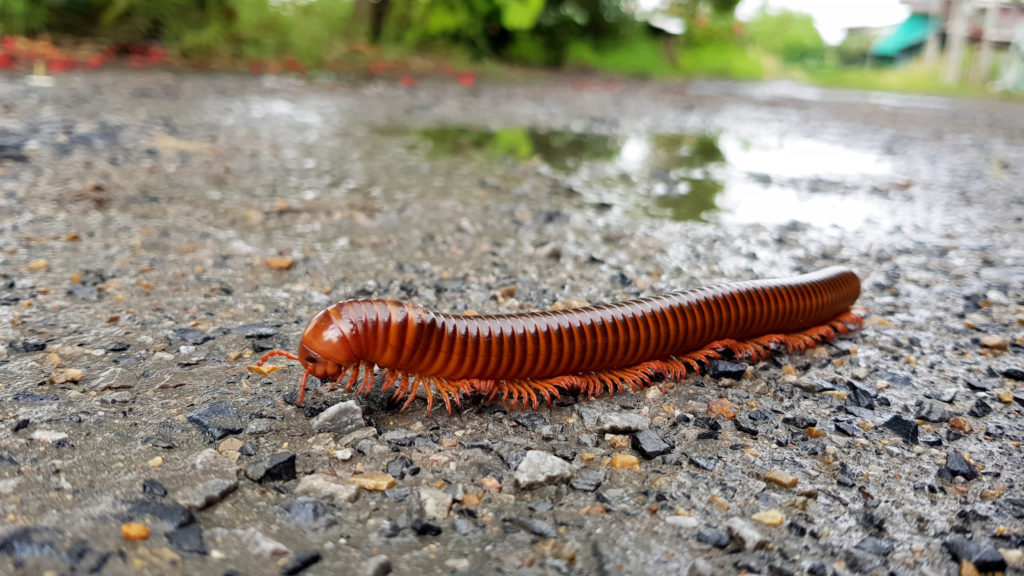Inchworms vs. Earthworms vs. Centipedes vs. Millipedes
Inchworms vs. Earthworms vs. Centipedes vs. Millipedes
Since there are thousands of different insect species in the U.S. alone, it’s no wonder we often confuse one type for another. Insects within the same family have very similar behavior, habitats, and diets, not to mention alike appearances. Many of the creepy-crawly insects look similar to the naked eye, but there are quite a few differences between four of these common crawlers.
Inchworms

These worms go by a few different names – span worms, cankerworms, loopers – but they are probably more widely known as inchworms. But the first fact to note about these insects is that they aren’t worms at all! They are technically caterpillars or larvae of moths in the Geometridae family. But their name comes from the motion they do to move around, since they slowly inch their way along the path by repeatedly stretching and constricting their body. While inch worms are harmless to humans, they can be very detrimental to plant life. They eat leaves, and specifically enjoy the leaves of apple, oak, elm, and mulberry trees. An inchworm infestation is bad news for trees, as the gradual munching of leaves can kill the tree if they eat it enough! Not to worry, though; there is a natural population control in place for these crawlies. Since birds and larger insects favor these small larvae, there will likely not be very many for you to deal with if they invade your yard. And since they are larvae, they will not be in this stage forever, so the inchworm season is short-lived before they become moths.
Earthworms

Earthworms are actually worms, as opposed to the inchworms from earlier. These are almost always seen after a big rainstorm on sidewalks and in the grass. When it is actively raining, the earthworms like to stay in their burrows in moist soil. They are actually good for the soil, since they keep it fertile by constantly moving it around. These invertebrates move around by use of their slimy skin that constantly produces mucus to allow the worm to move through tough soil. Earthworms live off of leaves, roots, and animal carcasses, which is a scary thought. They live in small herds rather than large groups, and they make decisions as a group on where to live and what to get for food. Surprisingly, earthworms can live anywhere from four to eight years! They thrive in wetter climates, so they are more popular in states and cities that get a lot of rain throughout the year. Sunlight isn’t good for them as it dries their skin out and depletes their ability to continue producing mucus in order to move around. This is why they are basically never seen on a sunny day, unless it is their dried out form on the sidewalk. Earthworms aren’t harmful insects, and are actually good for plants and the soil due to their active burrowing nature.
Centipedes

A centipede is one of the creepiest of crawlies, thanks to the uncomfortable number of legs they have. They can have anywhere from 15 to 177 pairs of tiny legs that move in a mesmerizing way every time they walk. The last pair of legs on female centipedes is actually longer than their body, which is how you can tell a female from a male. They are essentially nocturnal, doing all of their foraging at night. Centipedes favor damp areas with food sources nearby. This is why they are typically found in bathrooms, closets, and basements when they somehow get into our homes. They are considered beneficial since they mainly eat other insects like flies, roaches, and spiders. But since they have extremely poor eyesight, and some don’t even have eyes, centipedes detect their prey through their antennae. This is why they seem to crawl in erratic patterns; they are feeling their way around the area. While centipedes do have poisonous jaws, they are not strong enough to actually puncture human skin. If someone does get bitten by a centipede, it will likely result in some swelling and local pain, similar to a bee sting. Centipedes live for one to two years on average, but certain species can live up to six years. Luckily, most centipedes that invade our homes don’t make it that long.
Millipedes

The creepy lookalikes of centipedes, millipedes, are actually not closely related to them. Millipedes are more related to shrimp, lobsters, and crayfish, interestingly enough. These invertebrates are slightly flat and have distinguishable body segments. Each segment has two sets of legs on the other side of its body. Like the inchworm, the millipedes’ name is actually based on false information. Most of them have less than one hundred feet, not one thousand like the name suggests. Even though they look terrifying in close proximity, millipedes are basically harmless to us. They have additional protection thanks to their hard exoskeleton. This is good for them, since they don’t have any pinchers or stingers to protect themselves with. Millipedes mostly live in moist soil under piles of leaf litter, giving them the darkest and coolest environment to enjoy. Like earthworms, millipedes are beneficial to soil since they constantly move it around and rejuvenate it. They break down dead plant material for nutrients, which also helps with plant health into the roots.
Green is Here to Help!
No matter what creepy-crawlie has found its way into your home or yard, our pest control team is here to help. Even though some may be beneficial in eating other insects, they are still pests when they enter our homes uninvited. No matter the season or climate, pests should not be anywhere inside our homes, even if the insects are interesting to look at.
Citations
Barnett, T. (2021, April 5). Inchworm information: Are inchworms bad for plants? Gardening Know How. Available at https://www.gardeningknowhow.com/plant-problems/pests/insects/are-inchworms-bad-for-plants.htm (Accessed on March 16, 2022).
Interesting facts about centipedes. (n.d.). Pest World. Retrieved March 16, 2022, from https://www.pestworld.org/news-hub/pest-articles/interesting-facts-about-centipedes/
Kidadl Team. (2021, November 4). 15 earthworms facts you’ll never forget. Kidadl. Available at https://kidadl.com/animal-facts/earthworms-facts (Accessed on March 16, 2022).
Millipedes. (n.d.). The National Wildlife Federation. Retrieved from March 16, 2022, from https://www.nwf.org/Educational-Resources/Wildlife-Guide/Invertebrates/Millipedes
8 Creative Ways to Have a Pest-Free Fourth of July
8 Creative Ways to Have a Pest-Free Fourth of July 8 Creative Ways to Have a Pest-Free Fourth of July Summary: The Fourth [...]
A Simple Guide to Preventing Stinging Pests
A Simple Guide to Preventing Stinging Pests A Simple Guide to Preventing Stinging Pests Summary: Stinging insects are more active in warm weather, [...]
These 10 Natural Mosquito Repellents Can Actually Help
These 10 Natural Mosquito Repellents Can Actually Help These 10 Natural Mosquito Repellents Can Actually Help Summary: Natural mosquito repellents are easier to [...]
How to Get Rid of Carpet Beetles
How to Get Rid of Carpet Beetles How to Get Rid of Carpet Beetles Summary: Carpet beetles are sneaky pests that don’t usually [...]
How Do Roaches Affect Asthma and Allergies?
How Do Roaches Affect Asthma and Allergies? How Do Roaches Affect Asthma and Allergies? Summary: It’s no secret that pests impact human health, [...]
These 5 Carnivorous Pests Might Surprise You!
These 5 Carnivorous Pests Might Surprise You! These 5 Carnivorous Pests Might Surprise You! Summary: There are many eco-friendly ways to prevent pests, [...]

